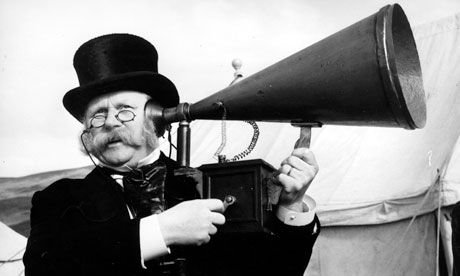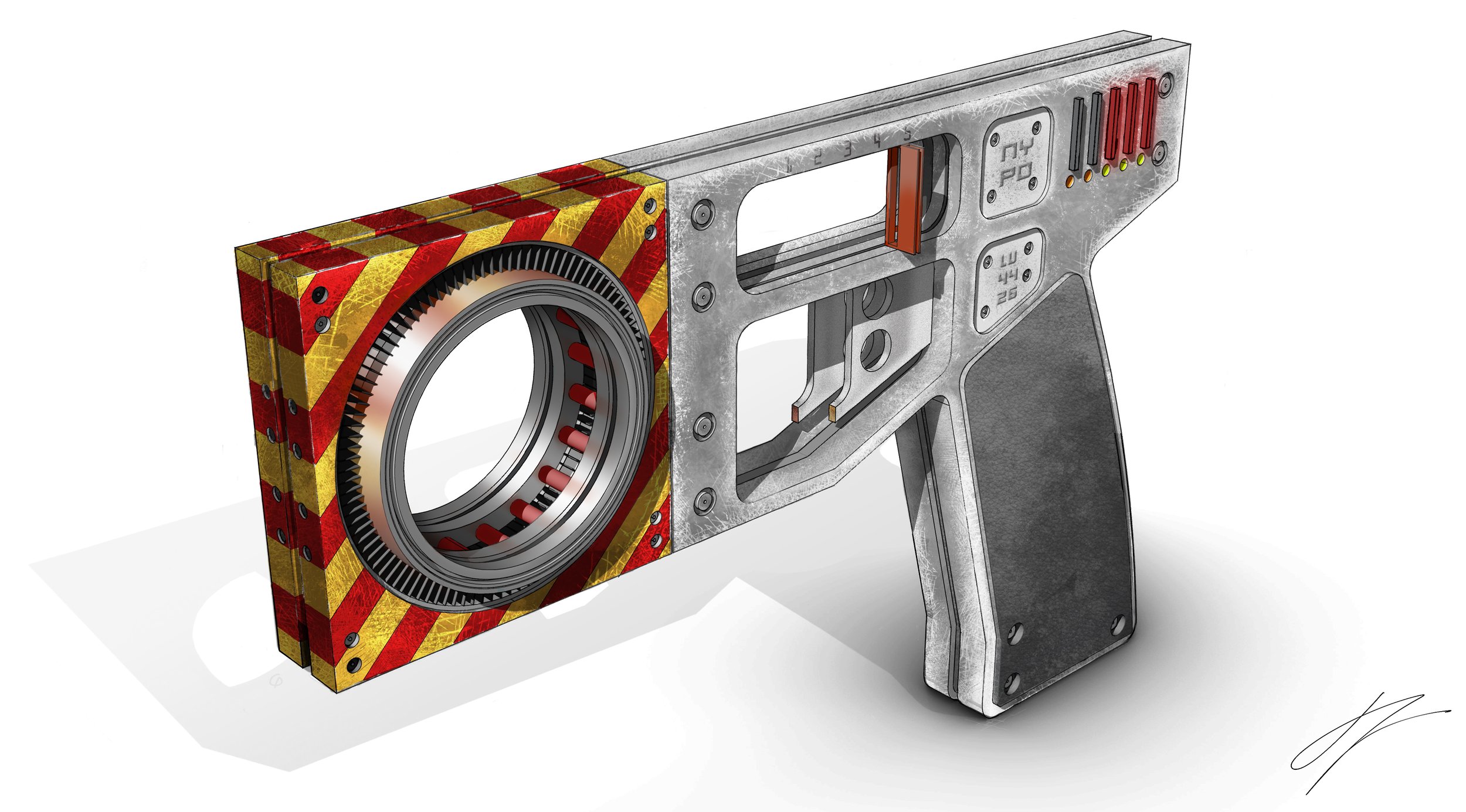HOW A 1970S POLAROID CAMERA BECAME THE WEAPON OF CHOICE IN 2050S NEW YORK (2).
Go Big Or Go Home
The NYPD's Standard Issue Riot Gun
Last page I discussed the basic ideas behind a centrifuge weapon system in a handgun, and its 'kit-of-parts' approach.
This week I'm going to look at the gun design in some more detail, and how it scales into different weapons systems.
The basic weapon component—the centrifuge, heatsinks and ammunition—are contained in interchangeable cartridges. These are 'hot-swappable' ie. in the middle of the firefight you just pull one off and slide another into place.
This allows the user freedom to have different types of ammunition readily available. You could have a cartridge for aluminum pellets (general purpose), rubber balls (stun rounds), pinhead darts (poison), and so on.
Further, the interchangeable cartridges could be colored differently to show what round was being selected, (which allows me to introduce some flashes of colors into the design, which it really needed 😀).
(ABOVE) The red and blue striped cartridge contains rubber bearing used for riot control.
(BELOW) Yellow and green striped cartridges contain rubber pin head explosives used for 'extreme ballistic environments.'
This combination of a plastic cartridge and simple grip meant the gun would be light compared to contemporary weapons. Growing up in the UK I had very little gun education—just my dad’s old air rifle—and the biggest surprises when I got to a firing range were how heavy guns are (anyone who runs around all day with a rifle and backpack—I’m looking at you, Marines—must be super fit) and how loud guns are.
I mean, how can John Wick hear anything after that first movie? I guess an ear trumpet could adversely affect his ability to disappear into a crowd though.
John Wick at 60.
The diagram above shows the basic CWS gun components: The replaceable cartridge is orange; the yellow circle is the centrifuge component, with external heat-sinks (the fins). The cyan is a cheap, lightweight plastic chassis; the green hand-grip contains a replaceable battery; the red strips show ammunition capacity; the blue slider selects rate of fire; the grey panels show police badge number plus registration info.
The replaceable cartridge's color coding relates to the ammunition: in this case, the red/yellow stripes show aluminum pin heads.
The extremely ugly "Big Gun," a combination between Hand Gun and Riot Gun parts; it often overheated and was withdrawn from service after eighteen months.
A standard issue NYPD riot gun. This is built from the same set of components as the handgun, but now with the grip being in the center, with two much larger cartridges either side. This allows them to be swapped as needed. This versions has the optional laser sight removed from the top groove, allowing easy stowing in a suitable backpack.
These guns took six months to design, so I hope you like the results. I think they give the Cortex series a unique aesthetic. As I’ve mentioned before, I keep a lot of this detail out of the books as I don’t want the story to get bogged down by descriptions, so it’s great to finally be able to talk about it.
As there were modeled in 3D (to check dimensions) I can also 3D print them 😛 Should I do one in clear resin? Or go straight to printing a metal version? I’d love to hear your thoughts on this, so send me an email at jim@jimkeen.com and let me know! 😀
Next time, I'm going to talk in some more detail about my workflow and why these designs look they way they look!








